|
PART 1 T O P I C |
|
|
|
|
|
|
|
|
|
|
|
|
|
|
|
|
|
|
JewishWikipedia.info
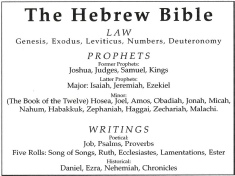
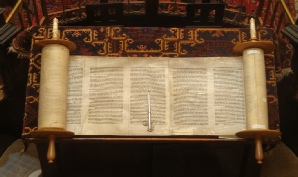
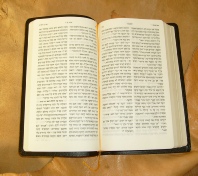
THE
INCREDIBLE
STORY OF THE JEWISH PEOPLE
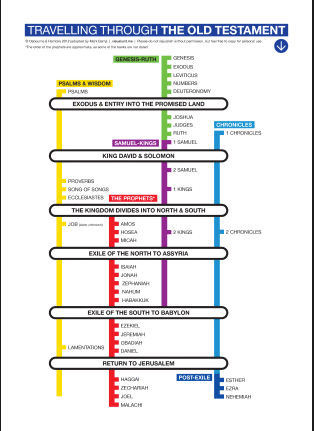
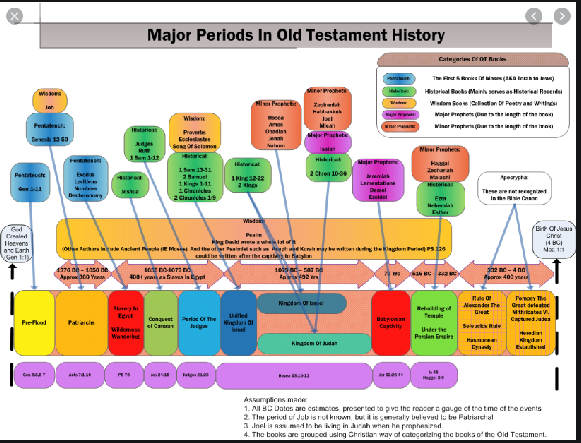
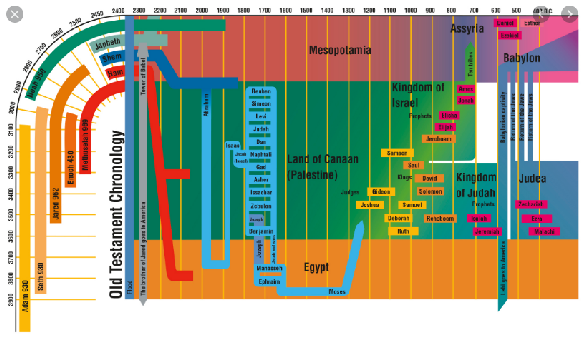
CHRONOLOGY
(See Timeline)
THEOLOGICAL CHRONOLOGY
Wikipedia
The chronology of the Bible is an elaborate system of lifespans, "generations," and other means by which the passage of events is measured, beginning with Creation and extending through other significant events. A widespread scholarly understanding is that the Bible marks out a world cycle (Great Year) of 4,000 years, beginning with Creation and ending, presumably, around 164 BCE, with the year AM 2666 for the Exodus representing 26 2/3 of 100 years or two-thirds of the total. It was theological in intent, not historical in the modern sense, functions as an implied prophecy whose key lies in the identification of the final event.
The count begins with creation and Year AM 1. The passage of time from the Creation to the Exodus is measured by adding the ages of the Patriarchs at the birth of their firstborn sons, later through express statements, and later still by the synchronised reigns of the kings of Israel and Judah. The Exodus takes place in the year anno mundi 2666, or AM 2666, exactly two thirds of the way through the four thousand years, the Temple in Jerusalem is commenced 480 years, or 12 generations of 40 years each, after that, and 430 years pass between the building of the Temple and its destruction. The 50 years between the destruction of the Temple and the "Decree of Cyrus" and end of the Babylonian Exile, added to the 430 years for which the Temple stood, produces another symmetrical period of 480 years, and the 374 years between the re-dedication of the Temple by the Maccabees and the Edict of Cyrus completes the 4,000 years.
As recently as the 17th-18th century, archbishop James Ussher and scholars of the stature of Isaac Newton believed that the date of Creation was knowable from the Bible. Today, the Genesis account of Creation has long since vanished from serious cosmology, the Patriarchs and Exodus are no longer included in most serious histories of ancient Israel, and it is almost universally accepted that Joshua and Judges have little historical value. Even the monarchy is questioned, and although scholars continue to advance proposals for reconciling the chronology of the Books of Kings, there is "little consensus on acceptable methods of dealing with conflicting data."
EDITORS NOTE: Dr Gerald Schroeder in ‘Genesis And The Big Bang (1991)’, reconciled the bible and science theories of creation. Wikipedia said
His works frequently cite Talmudic, Midrashic and medieval commentaries on Biblical creation accounts, such as commentaries written by the Jewish philosopher Nachmanides. Among other things, Schroeder attempts to reconcile a six-day creation as described in Genesis with the scientific evidence that the world is billions of years old using the idea that the perceived flow of time for a given event in an expanding universe varies with the observer's perspective of that event. He attempts to reconcile the two perspectives numerically, calculating the effect of the stretching of space-time, based on Einstein's general relativity.[7]
Namely, that from the perspective of the point of origin of the Big Bang, according to Einstein's equations of the 'stretching factor', time dilates by a factor of roughly 1,000,000,000,000, meaning one trillion days on earth would appear to pass as one day from that point, due to the stretching of space. When applied to the estimated age of the universe at 13.8 billion years, from the perspective of the point of origin, the universe today would appear to have just begun its sixth day of existence, or if the universe is 15 billion years old from the perspective of earth, it would appear to have just completed its sixth day.[8] Antony Flew, an academic philosopher who promoted atheism for most of his adult life indicated that the arguments of Gerald Schroeder had influenced his decision to become a deist.[9][10]
His theories to reconcile faith and science have drawn some criticism from both religious and non-religious scientists, and his works remain controversial in scientific circles (but the maths behind it, as far as I know, have never been broken).
This works as follows
According to Dr Schroeder, since the universe started in such a very tiny volume, the first twenty-four hour day was a time period of 8 billion years. As the universe continued to expand, the second day was only 4 billion years, the third day was 2 billion years, the fourth day was 1 billion years, the fifth day was 1/2 billion years and the sixth day was 1/4 billion years for a grand total of 15 3/4 billion years.
See also Answer 4 Patently Jewish and Age of the Universe (Aish)
JEWISH AND CHRISTIAN DATES
(from ‘The Amazing Adventures of the Jewish People’ by Max I Dimont)
Jews began dating events not with a king or a divinity but with the creation of man. In Judaism mankind, not a god or an individual, is the center of destiny.
For practical purposes the Jews have adopted a common calendar with Western civilization. The Christian designation of BC (‘Before Christ’) is replaced with BCE. (Before the Common Era) and AD (Anno Domini ‘the year of our Lord’) by CE. (Common Era).
So, for instance, instead of saying that the Modern state of Israel was founded in 1948 AD., or that David was crowned king of ancient Israel in 1000 BC,
the Jews say the former was in 1948 CE and the latter in 1000 BCE.
Year 1 in Jewish chronology is the creation of Adam and Eve which, according to tradition, took place 3,760 years before the birth of Jesus, The event used by Western civilization as Year 1.
To find the Jewish date for an event occurring either before or after the birth of Jesus, just subtract or add the year in which the event took place from or to 3,760. Thus 1000 BC would be the Jewish year of 2760 (3,760 minus 1,000), and 1000 AD would be the Jewish year of 4760 (3,760 plus 1,000)
Dates given in Jewish history may vary slightly as scholars disagree on the exact dates they occurred. These variations in no way affect the validity of the event itself.
JEWISH CALENDAR, COUNTING THE JEWISH YEARS - HOW THE JEWISH YEAR IS NUMBERED.
My Jewish Learning, Rabbi Rachel M Solomin
The Jewish calendar not only has its own unique months, but it also numbers years differently from the secular calendar. The year 2018, for instance, was roughly equivalent to the Jewish year 5778. (Specifically, Rosh Hashanah, the Jewish New Year, in September 2018 marks the transition from 5778 to 5779.)
The counting of Jewish years, as we know it today, dates from the Middle Ages. In secular texts, Jewish time is often noted as “A.M.” — anno mundo — literally, “years of the world.” (Occasionally, “A.M.” is explained as standing for aera mundi, “era of the world.”) This system of Jewish time is called the “Mundane Era” (English for aera mundi) because those who invented it believed they were calculating dates from the birth of the world.
CHRONOLOGIES OF THE BIBLE AND TEMPLE
The basis of the Jewish annual calendar is ancient. The Torah speaks of the annual cycle of holy days and festivals, and it was systematized by the sages well before the fall of the Second Temple in 70 C.E.
If one tries to ascertain the origin of our counting of years, however, the Bible does not seem particularly helpful. When providing a history, the Bible refers to lifetimes. For example, the Torah tells us that Abraham was 75 years old when he and his household were sent from Haran to Canaan (Genesis 12:4). In the books of Samuel, Kings, and Chronicles, dates are generally given according to the years of a sovereign’s rule.
Most often, the dates are consistent among these five books. During the time when two kings ruled the divided kingdoms of Judah and Israel, the ascendance of one state’s king might be given relative to the years of the other king’s reign. For example, II Kings 14:1 reads: “In the second year of [the reign of] Yoash ben Yoahaz, King of Israel, Amatzyahu ruled [i.e. came to the throne] as King of Judah.”
During the fourth century B.C.E., a dating system was sought out for secular use on business and legal documents. At this time, the Jews borrowed the practice of the Greeks, who had introduced the practice of numbering time in “eras”–periods of time relative to a historical event, rather than the lifetime or rule of any one person. This new system is called the “Seleucid Era” by secular scholars and, in Jewish circles, it is known as “minyan shtarot”–“accounting of contracts.” It counts time from the year 312-311 B.C.E., supposedly six years following the arrival of Alexander in the Land of Israel.
For private records and Temple histories, a different era was established, one measured from the Exodus from Egypt. An example of this can be seen in I Kings 6:1, where the date for the construction of the First Temple is given as 480 of the Exodus era.
CALCULATING THE BIRTH OF THE WORLD
The Tannaim (sages of the late Second Temple Period and the century after the destruction) calculated the date of Creation. They did so by basing their work upon the Bible’s account of lifetimes and kingdoms, thereby determining the period of time from Creation to a known date, in this case, the destruction of the Second Temple in 70 C.E.
Many rabbis attempted this task, but the method attributed to Rabbi Yossi ben Halafta, a second century C.E. sage, is the one which gained popularity. He calculated “molad tohu”–“birth from nothing”–to be in the fourth hour of Monday, October 7, 3761 B.C.E. (according to the Gregorian calendar used in the secular world today). In Hebrew, this moment has the mnemonic acronym “BeHaRD”, which stands for:
Bet: the second day of the week, Monday (since the letter bet often represents the number two);
Hei: the fifth hour (since hei represents five);
Reish-Daled: 204 halakim (“parts,” a smaller measure of time, based on the idea that reish=200, daled=4).
The calculation of BeHaRD is discussed in a work attributed to Rabbi Yossi, Seder Olam (“Order of the World”), which is also sometimes called Seder Olam Rabbah in order to distinguish it from a work of similar name (the later Gaonic work, Seder Olam Zuta).
Innumerable scholars, both Jewish and Christian, have attempted to calculate the date of Creation. Even if they used the same basis (Tanakh, the Hebrew Bible) for their systems of accounting, there is a broad range among their estimates. The historian des Vignoles stated in the introduction to his treatise on chronology that he had found well over 200 different calculations of the time from the birth of the world to the fall of the Second Temple, and that they varied by as much as 3,500 years. Well into the rule of Queen Victoria of England the most commonly given date for Creation was the year 4004 B.C.E., calculated by Bishop Usher, who published this date in 1654.
To this day, those Jews who believe the biblical accounting of time to be literal still accept Rabbi Yossi’s calculation, dating Creation to the year 3761 B.C.E. Others claim that the date is figurative, symbolic, or holds esoteric meaning. In calculating BeHaRD, Rabbi Yossi tried to justify disparate accountings from the following sources: the chronologies of Samuel, Kings, and Chronicles; those of the Second Temple kingdoms, in rabbinic histories passed down to the Talmud and found in the Babylonian Talmud, Avodah Zarah 9a and 10a; and the prophecies of Jeremiah and Daniel.
Some academics compare the Genesis accounting of dates with those of the Greeks, Chaldeans (including the Babylonians), Egyptians, and Hindus. The Chaldeans, Egyptians, and Hindus used enormous figures, into the millions of years, to explain the timeframe of Creation. The ancient Hebrews and Greeks seemed unwilling to deal in such large numbers. Both peoples ascribed Creation to a date closer to their own times. This may indicate either a political agenda (consciously or subconsciously communicating a cultural chauvinism) or may simply be a simplification for the purpose of clarity.
It is possible that there is a direct correlation between the seven days of Creation mentioned in Genesis and a specific Babylonian system, which would suggest that each Genesis “day” represents a specific number of solar years.
ESTABLISHMENT OF THE MUNDANE ERA
The Seleucid and Mundane Eras coexisted for numerous centuries. Most often, Rav Sherira Gaon — the last Gaon, the head of the academies in Babylonia in the centuries following the editing of the Talmud — is given the credit for suggesting the use of BeHaRD as the basis for a chronological system, in the 10th century C.E.
Maimonides (1135-1204 C.E.) at times used multiple eras, giving a date first according to the years following the destruction of the Second Temple, then according to the Seleucid Era, and finally according to the Mundane Era. This suggests that no single system had achieved universal acceptance by the 13th century.
The Seleucid Era continued to be used in parts of the Arab world until quite late. Among Egyptian Jewry, it was the dominant system used until Rabbi David ibn Abi Zimra discontinued its use in the 16th century C.E.; in parts of the Arabian Peninsula, it was used alongside the Mundane Era as late as the 19th century.
JEWISH CALENDAR: SOLAR AND LUNAR
How the Hebrew calendar works.
The rhythm of Jewish time is determined both by the sun and by the moon. The basic unit of time is naturally enough the day, which is a unit of time determined by the amount of sunlight reaching the earth as it rotates on its axis. In the Western world a day begins in the middle of the night and lasts until the next midnight. Since the standardization of time, days are divided into regular segments of 24 hours.
Looking for a Jewish calendar? Click here to create a free, customized, printable Jewish calendar. You can also download free digital Jewish calendar apps for your mobile device at Apple’s App Store or Google Play. Or purchase a printed calendar here.
The Jewish day is also ruled by the sun. However, it is more firmly rooted in simply observable phenomena than our standard day. If we didn’t have clocks and watches, we would never be able to determine at what moment one day ends and the next one begins. Following Genesis 1, in which the refrain “it was evening and it was morning” sums up each day’s creative work, Judaism measures its day from one evening to the next. Of course, the question arises how to define the exact moment when one day ends and the next begins.
WHY THE JEWISH DAY BEGINS IN THE EVENING
The rabbis determined that the new day begins at the moment when the sun sinks below the horizon. Unlike our secular day, in which the daylight hours are framed by night, the Jewish day begins with night and ends with day.
This is the reason why all Jewish holidays begin in the evening before the first day of the observance. In fact, according to a Jewish reckoning of time, the evening before the day is indeed the beginning of the new calendar day.
THE STORY OF CREATION
The first story of creation in Genesis 1:1-2:4 also establishes the next higher unit of measuring time, namely the seven-day week. This tale serves to place the week firmly within the divine plan, in which a six-day workweek is followed by the sacred Sabbath, a divinely ordained day of rest. Since most units of measurement ultimately go back to the Babylonians, who were the first great astronomers and natural observers of the ancient world, we know that the week is meant to be coordinated with the four phases of the moon.
Therefore, roughly speaking, four weeks make a month. And roughly 12 months make a year. Since, however, the 12-month lunar year and the 365-day solar calendar do not overlap exactly, the Gregorian calendar that has become the standard world calendar has months of unequal length that no longer correlate with the phases of the moon and has to insert an extra day every four years (the leap year) in order to have the calendar reflect the solar year.
LEAP YEARS AND OTHER ADJUSTMENTS
This becomes somewhat more complicated in the case of the Jewish calendar, for it is still coordinated with the phases of the moon. Indeed, it is that which determines the times of the Jewish holidays. This is of particular importance with those that fall on the new moon and those that are celebrated at the time of the full moon. In addition, since the 12-month lunar year is a few days shorter than a solar year, strict adherence to a lunar calendar would mean that the holidays would eventually take place at the wrong season.
This would mean that every now and then we would celebrate Hanukkah, the mid-winter festival of lights, in the middle of summer and Sukkot, the autumn harvest festival, in the early spring. Therefore, in an attempt to coordinate the traditional lunar year with the solar year Judaism has worked out a system of 19-year cycles, in which there are seven leap years. In distinction to the day added to the secular leap year, the Jewish calendar adds a full month to the end of its year. In this manner the Jewish holidays fluctuate by about a month or so in relationship to the Gregorian calendar, but always fall at the same time of year. It is interesting to note that Islam also follows a lunar calendar. In contrast to Judaism, however, the Islamic calendar is strictly a lunar one and is not coordinated with the solar year. Thus, over the course of time, holidays such as Ramadan, occur at different seasons.
|
CLICK BUTTON TO GO TO SECTION |
THE HEBREW BIBLE/ THE PENTATEUCH /
OLD TESTAMENT/
HEBREW SCRIPTURES/TORAH/TANAKH
